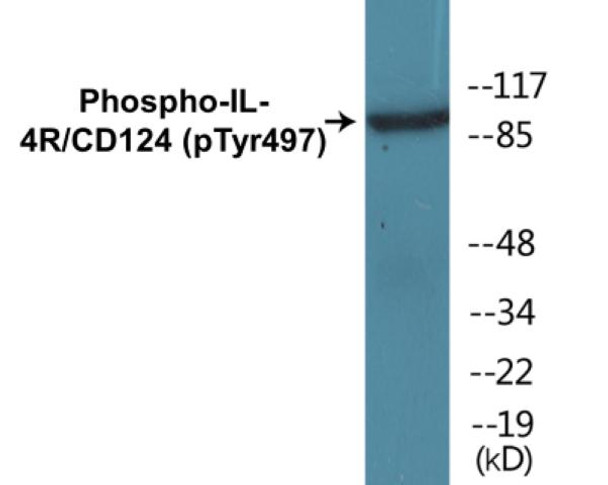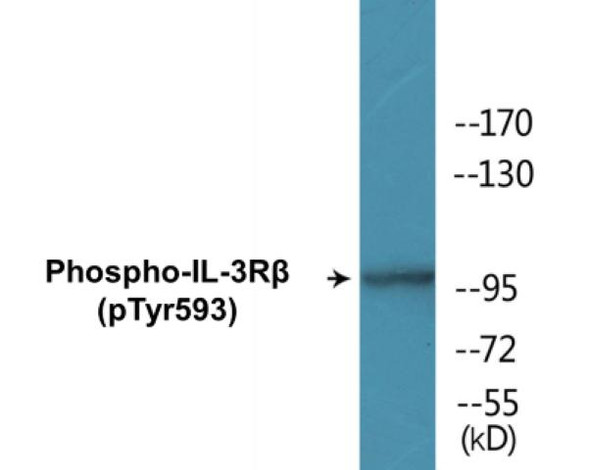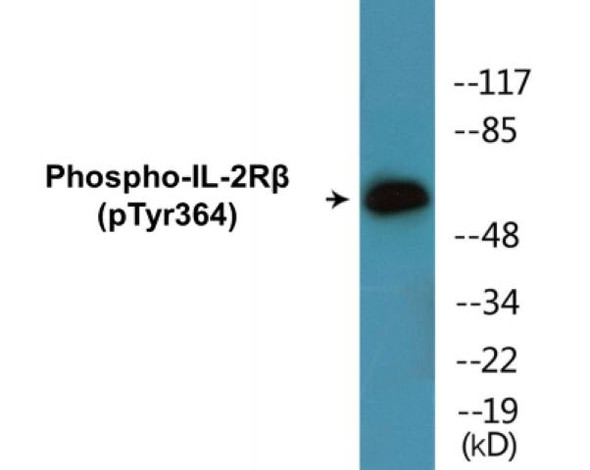IL-4R/CD124 (Phospho-Tyr497)Colorimetric Cell-Based ELISA Kit (CBCAB01456)
- SKU:
- CBCAB01456
- Product Type:
- ELISA Kit
- ELISA Type:
- Cell Based Phospho Specific
- Research Area:
- Immunology
- Reactivity:
- Human
- Mouse
- Detection Method:
- Colorimetric
Description
IL-4R/CD124 (Phospho-Tyr497)Colorimetric Cell-Based ELISA Kit
The Human IL-4R (CD124) Phospho-Tyr497 Colorimetric Cell-Based ELISA Kit is specifically designed for the accurate detection of phosphorylated Tyr497 levels of the IL-4 receptor (CD124) in cell lysates. This kit offers high sensitivity and specificity, ensuring precise and reliable results for a variety of research applications.The IL-4 receptor (CD124) is a key receptor involved in the signaling pathway of interleukin-4, a cytokine that plays a crucial role in regulating immune responses and inflammation. Phosphorylation of Tyr497 on the IL-4 receptor is known to activate downstream signaling cascades, influencing processes such as cell proliferation and differentiation.
By measuring the levels of phosphorylated Tyr497 on the IL-4 receptor, researchers can gain valuable insights into the activation status of this receptor and its potential role in various physiological and pathological conditions. This kit is an essential tool for studying the IL-4 signaling pathway, understanding immune responses, and exploring potential therapeutic targets for diseases such as asthma, allergies, and autoimmune disorders.
| Product Name: | IL-4R/CD124 (Phospho-Tyr497) Colorimetric Cell-Based ELISA |
| Product Code: | CBCAB01456 |
| ELISA Type: | Cell-Based |
| Target: | IL-4R/CD124 (Phospho-Tyr497) |
| Reactivity: | Human, Mouse |
| Dynamic Range: | > 5000 Cells |
| Detection Method: | Colorimetric 450 nm |
| Format: | 2 x 96-Well Microplates |
The IL-4R/CD124 (Phospho-Tyr497) Colorimetric Cell-Based ELISA Kit is a convenient, lysate-free, high throughput and sensitive assay kit that can detect IL-4R/CD124 protein phosphorylation and expression profile in cells. The kit can be used for measuring the relative amounts of phosphorylated IL-4R/CD124 in cultured cells as well as screening for the effects that various treatments, inhibitors (ie. siRNA or chemicals), or activators have on IL-4R/CD124 phosphorylation.
Qualitative determination of IL-4R/CD124 (Phospho-Tyr497) concentration is achieved by an indirect ELISA format. In essence, IL-4R/CD124 (Phospho-Tyr497) is captured by IL-4R/CD124 (Phospho-Tyr497)-specific primary (1ø) antibodies while the HRP-conjugated secondary (2ø) antibodies bind the Fc region of the 1ø antibody. Through this binding, the HRP enzyme conjugated to the 2ø antibody can catalyze a colorimetric reaction upon substrate addition. Due to the qualitative nature of the Cell-Based ELISA, multiple normalization methods are needed:
| 1. | A monoclonal antibody specific for human GAPDH is included to serve as an internal positive control in normalizing the target absorbance values. |
| 2. | Following the colorimetric measurement of HRP activity via substrate addition, the Crystal Violet whole-cell staining method may be used to determine cell density. After staining, the results can be analysed by normalizing the absorbance values to cell amounts, by which the plating difference can be adjusted. |
| Database Information: | Gene ID: 3566, UniProt ID: P24394, OMIM: 147781, Unigene: Hs.513457 |
| Gene Symbol: | IL4R |
| Sub Type: | Phospho |
| UniProt Protein Function: | Receptor for both interleukin 4 and interleukin 13. Couples to the JAK1/2/3-STAT6 pathway. The IL4 response is involved in promoting Th2 differentiation. The IL4/IL13 responses are involved in regulating IgE production and, chemokine and mucus production at sites of allergic inflammation. In certain cell types, can signal through activation of insulin receptor substrates, IRS1/IRS2. |
| NCBI Summary: | This gene encodes the alpha chain of the interleukin-4 receptor, a type I transmembrane protein that can bind interleukin 4 and interleukin 13 to regulate IgE production. The encoded protein also can bind interleukin 4 to promote differentiation of Th2 cells. A soluble form of the encoded protein can be produced by proteolysis of the membrane-bound protein, and this soluble form can inhibit IL4-mediated cell proliferation and IL5 upregulation by T-cells. Allelic variations in this gene have been associated with atopy, a condition that can manifest itself as allergic rhinitis, sinusitus, asthma, or eczema. Polymorphisms in this gene are also associated with resistance to human immunodeficiency virus type-1 infection. Alternate splicing results in multiple transcript variants. [provided by RefSeq, Apr 2012] |
| UniProt Code: | P24394 |
| NCBI GenInfo Identifier: | 124335 |
| NCBI Gene ID: | 3566 |
| NCBI Accession: | P24394.1 |
| UniProt Secondary Accession: | P24394,Q96P01, Q9H181, Q9H182, Q9H183, Q9H184, Q9H185 Q9H186, Q9H187, B4E076, B9EKU8, H3BSY5, |
| UniProt Related Accession: | P24394 |
| Molecular Weight: | 88,267 Da |
| NCBI Full Name: | Interleukin-4 receptor subunit alpha |
| NCBI Synonym Full Names: | interleukin 4 receptor |
| NCBI Official Symbol: | IL4R |
| NCBI Official Synonym Symbols: | CD124; IL4RA; IL-4RA |
| NCBI Protein Information: | interleukin-4 receptor subunit alpha |
| UniProt Protein Name: | Interleukin-4 receptor subunit alpha |
| UniProt Synonym Protein Names: | CD_antigen: CD124 |
| Protein Family: | Interleukin |
| UniProt Gene Name: | IL4R |
| Component | Quantity |
| 96-Well Cell Culture Clear-Bottom Microplate | 2 plates |
| 10X TBS | 24 mL |
| Quenching Buffer | 24 mL |
| Blocking Buffer | 50 mL |
| 15X Wash Buffer | 50 mL |
| Primary Antibody Diluent | 12 mL |
| 100x Anti-Phospho Target Antibody | 60 µL |
| 100x Anti-Target Antibody | 60 µL |
| Anti-GAPDH Antibody | 60 µL |
| HRP-Conjugated Anti-Rabbit IgG Antibody | 12 mL |
| HRP-Conjugated Anti-Mouse IgG Antibody | 12 mL |
| SDS Solution | 12 mL |
| Stop Solution | 24 mL |
| Ready-to-Use Substrate | 12 mL |
| Crystal Violet Solution | 12 mL |
| Adhesive Plate Seals | 2 seals |
The following materials and/or equipment are NOT provided in this kit but are necessary to successfully conduct the experiment:
- Microplate reader able to measure absorbance at 450 nm and/or 595 nm for Crystal Violet Cell Staining (Optional)
- Micropipettes with capability of measuring volumes ranging from 1 µL to 1 ml
- 37% formaldehyde (Sigma Cat# F-8775) or formaldehyde from other sources
- Squirt bottle, manifold dispenser, multichannel pipette reservoir or automated microplate washer
- Graph paper or computer software capable of generating or displaying logarithmic functions
- Absorbent papers or vacuum aspirator
- Test tubes or microfuge tubes capable of storing ≥1 ml
- Poly-L-Lysine (Sigma Cat# P4832 for suspension cells)
- Orbital shaker (optional)
- Deionized or sterile water
*Note: Protocols are specific to each batch/lot. For the correct instructions please follow the protocol included in your kit.
| Step | Procedure |
| 1. | Seed 200 µL of 20,000 adherent cells in culture medium in each well of a 96-well plate. The plates included in the kit are sterile and treated for cell culture. For suspension cells and loosely attached cells, coat the plates with 100 µL of 10 µg/ml Poly-L-Lysine (not included) to each well of a 96-well plate for 30 minutes at 37 °C prior to adding cells. |
| 2. | Incubate the cells for overnight at 37 °C, 5% CO2. |
| 3. | Treat the cells as desired. |
| 4. | Remove the cell culture medium and rinse with 200 µL of 1x TBS, twice. |
| 5. | Fix the cells by incubating with 100 µL of Fixing Solution for 20 minutes at room temperature. The 4% formaldehyde is used for adherent cells and 8% formaldehyde is used for suspension cells and loosely attached cells. |
| 6. | Remove the Fixing Solution and wash the plate 3 times with 200 µL 1x Wash Buffer for five minutes each time with gentle shaking on the orbital shaker. The plate can be stored at 4 °C for a week. |
| 7. | Add 100 µL of Quenching Buffer and incubate for 20 minutes at room temperature. |
| 8. | Wash the plate 3 times with 1x Wash Buffer for 5 minutes each time. |
| 9. | Add 200 µL of Blocking Buffer and incubate for 1 hour at room temperature. |
| 10. | Wash 3 times with 200 µL of 1x Wash Buffer for 5 minutes each time. |
| 11. | Add 50 µL of 1x primary antibodies Anti-IL-4R/CD124 (Phospho-Tyr497) Antibody, Anti-IL-4R/CD124 Antibody and/or Anti-GAPDH Antibody) to the corresponding wells, cover with Parafilm and incubate for 16 hours (overnight) at 4 °C. If the target expression is known to be high, incubate for 2 hours at room temperature. |
| 12. | Wash 3 times with 200 µL of 1x Wash Buffer for 5 minutes each time. |
| 13. | Add 50 µL of 1x secondary antibodies (HRP-Conjugated AntiRabbit IgG Antibody or HRP-Conjugated Anti-Mouse IgG Antibody) to corresponding wells and incubate for 1.5 hours at room temperature. |
| 14. | Wash 3 times with 200 µL of 1x Wash Buffer for 5 minutes each time. |
| 15. | Add 50 µL of Ready-to-Use Substrate to each well and incubate for 30 minutes at room temperature in the dark. |
| 16. | Add 50 µL of Stop Solution to each well and read OD at 450 nm immediately using the microplate reader. |
(Additional Crystal Violet staining may be performed if desired – details of this may be found in the kit technical manual.)






